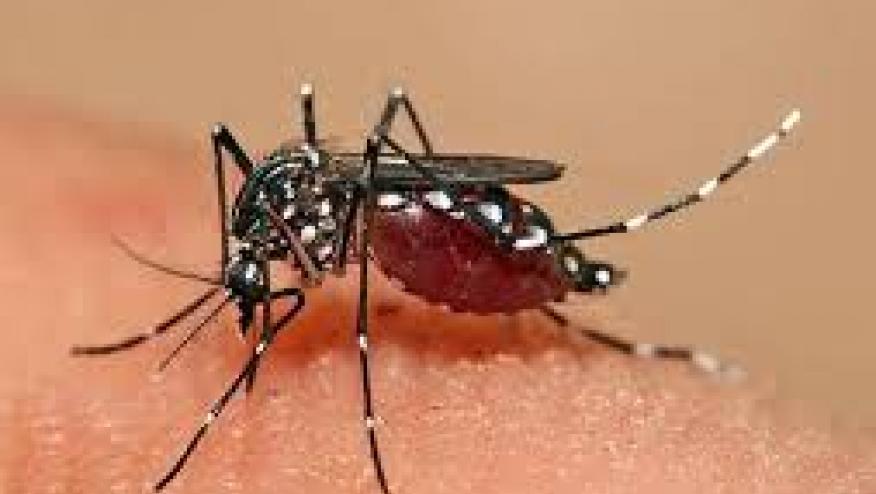Chikungunya Spread Continues (Best of 2015) Save

The spread of the viral infection Chikungunya continues with the CDC issuing a travel advisory for those traveling to Mexico, where over 7000 cases of the viral infection have been reported. Mexico and Central America accounts for 162,249 cases or nearly one-third of chikungunya reported in the Western hemisphere in 2015. The CDC recommends that travelers to Mexico, especially those with chronic illnesses, protect themselves from chikungunya by preventing mosquito bites. There have been no reports of Chikungunya in the US in 2015. (Citation source: http://buff.ly/1Os8zgB)
As of March 2015, there were more than 1.3 million cases of chikungunya reported from 44 countries and territories in the Caribbean and Americas, this includes 2,344 cases in United States citizens, almost exclusively US travelers returning from the Caribbean, and 11 locally transmitted cases have been reported from 4 different counties in Florida.
A comprehensive review of Chikungunya virus (CKV), its manifestations and course can be found at IDSE.net. CKV is the etiologic agent of chikungunya fever and belongs to the Togaviridae family. The globalization of chikungunya virus is in large part the result of the prior globalization of its 2 mosquito vectors, A. aegypti and A. albopictus. In the US, Caribbean and Western hemisphere, Aedes aegypti accounts for nearly all cases.
Similar to Dengue fever, human CKV infection is initiated by the bite of an infected female mosquito. Nearly 85% of inoculated patients will develop symptomatic disease. Characteristic features include fever over 39oC, headache, myalgia, rash, and severe joint pain.
The disease has an abrupt onset and this acute phase that lasts 7 to 10 days. Soon after, the majority of patients will improve. Improvement coincides with the appearance of neutralizing IgM antibodies and the end of viremia. IgM antibody production persists for 1 to 3 months, and IgM production confers long-term immunity to reinfection.
Joint pain occurs in all patients during the acute phase of the illness. Typically this manifests as an acute bilateral, symmetrical involvement of large and small joints. Up to 80% of patients may develop musculoskeletal manifestations that persist longer than 3 months. The most common manifestations are persistent or relapsing-remitting polyarthralgias, polyarthritis, and myalgias. Fingers, wrists, knees, ankles, and toes are the most frequently involved, but proximal joints and axial involvement can occur in the chronic stage. Tendinitis and enthesitis are also common. Chronic manifestations of CKV infection may resemble those of some autoimmune connective tissue diseases, like RA or seronegative spondyloarthritis. Severe, limiting myalgias and arthralgias may be accompanied by a transient maculopapular rash (usually days 2-5) on the trunk, face, arms, and legs. Children have been reported with bullous or blistering lesions.
Musculoskeletal symptoms may last for weeks or months and few (5-10%) have been reported to last for nearly 2 years. A chronic relapsing arthritis syndrome characterized by distal polyarthritis or monoarthritis and tenosynovitis in the hands has been reported. Chronic arthritis can be erosive.
Severe presentations are most common in young children, older adults with comorbidities, and neonates born to viremic mothers. CKV complications may include encephalitis, meningitis, seizures, encephalopathy, myocarditis, hepatitis, and multiorgan failure. Fatal outcomes with chikungunya are rare - with an estimated case fatality ratio of 1/1,000.
Diagnosis can be confirmed by serum or blister fluid PCR testing during the acute phase. Later, an IgM serologic diagnosis can be made after the first week and for up to the first 3 to 8 days of symptom onset up to 1 to 3 months symptom onset. IgG titers rise in the first few weeks and persist for years. A 4-fold increase in IgG titers may also be considered diagnostic.
There is currently no specific antiviral therapy approved for treatment of chikungunya infection. Hence, supportive care (hydration and bed rest), and symptom relief are the current standard. While acetapminophen and NSAIDs have been successfully employed, it should be noted that if Dengue is in the differential diagnosis, NSAIDs or aspirin should not be used un the patient is afebrile for 48 hours. Severe dengue infection differs by having severe abdominal pain, persistent vomiting, mucosal bleeding, edema, lethargy, enlarged liver, increased hematocrit and low platelet counts.
Potential agents under investigation but with no current proven efficacy are ribavirin, interferon, chloroquine, and human immunoglobulins purified from the plasma of convalescent chikungunya patients.








If you are a health practitioner, you may Login/Register to comment.
Due to the nature of these comment forums, only health practitioners are allowed to comment at this time.